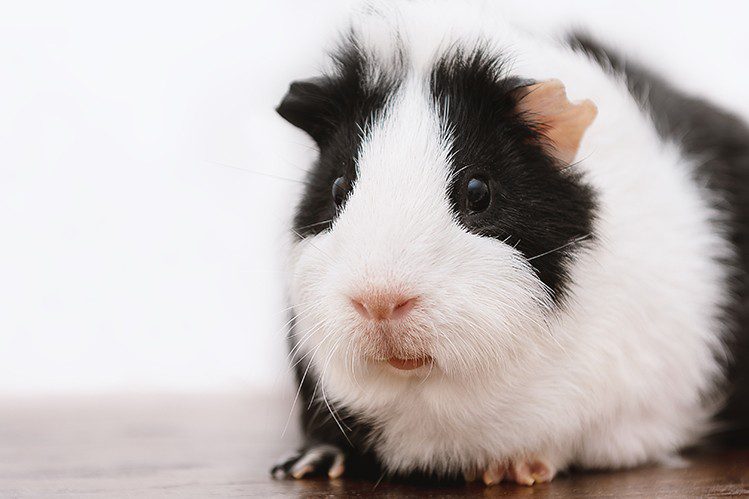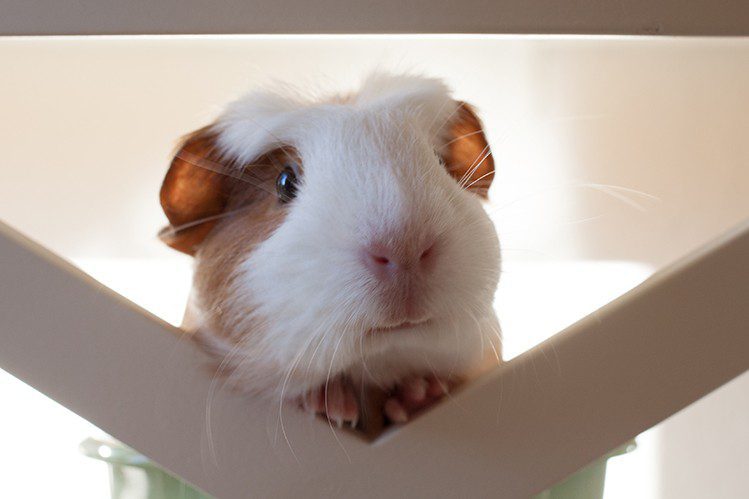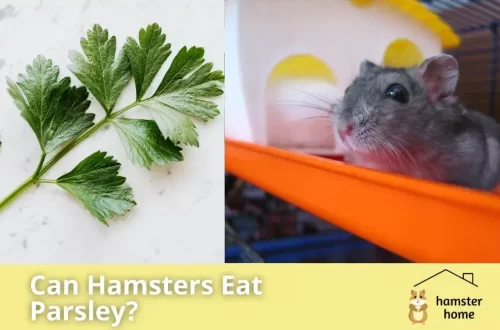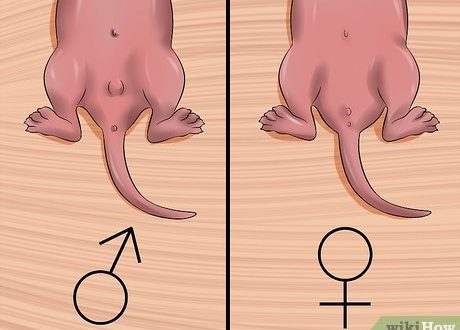
Vision of guinea pigs
Who was not interested in how our pets see the world? There is a lot of information about the vision of cats and dogs, but what about guinea pigs? Someone is sure that rodents have black and white vision, and someone that they can distinguish colors. Still others have heard that pigs are well oriented both in daylight and at night. And the fourth believe that pigs do not really need vision at all and that they move with the help of hearing and smell. Let’s still figure out what kind of vision guinea pigs actually have.
Contents
How do guinea pigs see?
The eyes of guinea pigs are located on the sides of the muzzle. This allows our pets to look left, right, forward and backward – and always be alert! With such an overview, it is easy to spot any danger from all sides. Impressive, isn’t it?
But this vision has a big minus – a blind spot in the nose. But do not be upset because of this feature. Nature was able to foresee this nuance and provided the area near the mouth and nose with hairs that help to recognize obstacles in the path of the animal. As a result, the animal can perfectly navigate the terrain and take into account the slightest depressions and rises.
But the very vision of guinea pigs is not distinguished by its sharpness. These rodents are not able to clearly distinguish nearby objects. To recognize the quality of food, recognize their owner, or distinguish friend from foe, pets mainly use their sense of smell and hearing.
Can guinea pigs see colors?
Admit it: did you also think that pigs have black and white vision? If yes, then we will make you happy. Of course, guinea pigs can distinguish colors – and they do it even better than dogs and cats! With a high probability, pigs perfectly recognize blue, green, red, yellow and orange colors. So the world for them is not a black and white movie, but quite a colorful picture, seasoned with a thousand sounds and smells.

Moving around the apartment or its cage, the pet sees a uniform color, smells and hears the sounds of the surrounding space. Imagine that at some point a pale spot appears in the rodent’s visibility zone, which differs from the previous picture in all sense organs. Right there in the head of the pig, the information received from the eyes, nose and ears is processed. After a moment, thanks to reflexes and life experience, the baby decides what to do next. If it is an attractive piece of apple, the pet will run to taste it. But if this spot turns out to be another pet, then the pig will most likely decide to hide.
The same thing happens in the wild.
How does a pig move in the dark?
Due to their nearsightedness, babies are not able to rely on sight at night. But for them it is not a problem.
Since pigs have excellent hearing and sense of smell, there are no difficulties in finding food and shelter even late at night. If at night the pet decides to eat or feed its children, then the smell of carrots or the squeak of offspring will serve as a guide in this mission.
When does a pet’s eyes need specialist help?
Quite often, owners “run” the eyes of pigs, because they rely only on the pet’s ability to eat and move around. You can’t do this, because eye diseases will worsen the pet’s quality of life and can lead to other diseases.
Be sure to check your pet’s eyes every day and see a veterinarian right away if you notice:
Blurred pupil or film (especially in a young individual)
Eyelid redness and any discharge from the eyes
Eyelid twitching or frequent blinking
Any injury in the eye area
Unnatural position of the eyeball or eyelid.
What eye diseases are common in guinea pigs?
- Blindness.
May be congenital or acquired. Congenital – does not pose a threat to the normal life of the pet. Acquired – may be the result of an injury or serious illness. In this case, you should contact your veterinarian.
- Corneal ulcer.
A consequence of eye injury or prolonged mechanical stress. Treatment and supervision by a specialist is required.
- Cataract.
Occurs in case of diabetes mellitus or old age of the pet. Rarely is it congenital.
The main symptom is clouding of the lens, but to clarify the diagnosis, you should consult a veterinarian.
More common problems are conjunctivitis and household eye injuries, in the spirit of getting a filler particle into the eye. Keep your pet’s hygiene and the cleanliness of the cage to minimize health risks.

Features of care
A prerequisite for caring for the eyes of a pet is their daily examination.
If there are small discharges or crusts in the corners of the eyelids, these places should be treated with a napkin dipped in boiled water.
If you experience any of the above symptoms, you should contact your veterinarian.
To protect your pet’s eyesight, do not place the cage near direct sunlight or in an area of strong light from lamps. Also try to avoid dark corners. Lighting should be calm.
Guinea pigs don’t see colors as well as we do, but much better than dogs and cats. Yes, they see primary colors and can look in different directions without turning their heads. However, pets do not focus on sight, but on smell and hearing. Even during the day, babies trust the surrounding sounds and smells more than pictures. Of course, this does not mean that the pig’s eyes do not need to be looked after. But if your rodent has congenital blindness, it is not at all necessary to feel sorry for him – believe me, the world for him without vision is very colorful, lively and fascinating!





